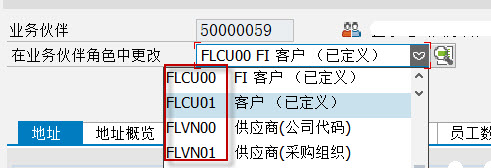STL初步:栈,队列和优先队列
集合栈计算机(The SetStack Computer)
有一个专门为了集合运算而设计的“集合栈”计算机。该机器有一个初始为空的栈,并且支持以下操作:
- PUSH:空集“{}”入栈
- DUP:把当前栈顶元素复制一份后再入栈
- UNION:出栈两个集合,然后把两者的并集入栈
- INTERSECT:出栈两个集合,然后把二者的交集入栈
- ADD:出栈两个集合,然后把先出栈的集合加入到后出栈的集合中,把结果入栈
每次操作后,输出栈顶集合的大小(即元素个数)。例如栈顶元素是A={ {}, { {}} }, 下一个元素是B={ {}, { { {}}} },则:
- UNION操作将得到{ {}, { {}}, { { {}}} },输出3.
- INTERSECT操作将得到{ {} },输出1
- ADD操作将得到{ {}, { { {}}}, { {}, { {}} } },输出3.
样例输入
6PUSHPUSHUNIONPUSHPUSHADD
样例输出
000001#include<set>#include<stack>#include<iostream>#include<map>#include<vector>#include<algorithm>using namespace std;typedef set<int> Set;map<Set,int> IDcache; //把集合映射为idvector<Set> SetCache; //根据id取集合stack<int> s; //题目中的栈int ID(Set x) //查找给定集合的id。如果找不到,分配一个新id{if(!IDcache.count(x)){SetCache.push_back(x); //添加新集合IDcache[x]=SetCache.size()-1;}return IDcache[x];}int n;int main(){cin>>n;while(n--){string exec;cin>>exec;if(exec[0] == 'P') s.push(ID(Set()));else if(exec[0] == 'D') s.push(s.top());else{Set x1 = SetCache[s.top()];s.pop();Set x2 = SetCache[s.top()];s.pop();Set x;if(exec[0] == 'U') set_union(x1.begin(),x1.end(),x2.begin(),x2.end(),inserter(x,x.begin()));//!!!inserterif(exec[0] == 'I') set_intersection(x1.begin(),x1.end(),x2.begin(),x2.end(),inserter(x,x.begin()));//!!!inserterif(exec[0] == 'A'){x=x2;x.insert(ID(x1));}s.push(ID(x));}cout<<SetCache[s.top()].size()<<endl;}}
队列是符合“先进先出”原则的“公平队列”。
STL队列定义在头文件<queue>中,可用queue<int>s方式定义,用push()和pop()进行元素的入队和出队操作,front()取队首元素,但不删除。
团体队列(Team Queue)
有t个团队的人正在排一个长队。每次新来一个人时,如果他有队友在排队,那么这个新人会插队到最后一个队友的身后。如果没有任何一个队友排队,则他会排到长队的队尾。
输入每个团队中所有队员的编号,要求支持如下3种指令(前两种指令可以穿插进行)
- ENQUEUE x:编号为x的人进入长队
- DEQUEUE: 长队列队首出队
- STOP: 停止模拟
对于每一个DEQUEUE指令,输出出对人的编号.
#include<cstdio>#include<queue>#include<map>using namespace std;const int maxt = 1000 + 10;int main(){int t, kase = 0;while (scanf("%d", &t) == 1 && t){map<int, int>team; //记录所有人的团队编号for (int i = 0; i<t; i++) //team[x]表示编号为x的人所在的团队编号{int n, x;scanf("%d", &n);while (n--){scanf("%d", &x);team[x] = i;}}printf("Scenario #%d\n", ++kase);queue<int>q, q2[maxt]; //模拟for(;;){int x;char cmd[10];scanf("%s", cmd);if (cmd[0] == 'S'){break;}else if (cmd[0] == 'D'){int t = q.front();printf("%d\n", q2[t].front()); //打印首元素q2[t].pop(); //首元素出队(先进先出)if (q2[t].empty()) q.pop(); //团队t全体出队列}else if (cmd[0] == 'E'){scanf("%d", &x);int t = team[x];if (q2[t].empty()) //团队t进入队列{q.push(t);}q2[t].push(x);}}printf("\n");}return 0;}
优先队列
先出队列是队列中优先级最高的元素,STL中用priority_queue<int>pq来声明,出队方法为top()。
自定义类型也可以组成优先队列,但必须为每个元素定义一个优先级。
例如,要实现一个“个位数大的整数优先级反而小”的优先队列,可以定义一个结构体cmp,重载“()”运算符,用priority_queue<int,vector<int>,cmp> pq的方式定义。
struct cmp{bool operator() (const int a,const int b)const //a的优先级比b小时返回true{return a%10>b%10;}};
简便定义方法:
priority_queue<int,vector<int>,great<int> >pq
注:可用push()和pop()进行元素的入队和出队操作,top()取队首元素,但不删除。
丑数
丑数指不能被2,3,5以外其他素数整除的数。把丑数从小到大排列起来,结果如下:
1,2,3,4,5,6,8,9,10,12,15…
求第1500个丑数。
/*最小的丑数是1,而对于任意丑数,2x,3x,5x也都是丑数。可以用一个优先队列保存所有已生成的丑数,每次取出最小的丑数,生成3个新的丑数。 */#include<iostream>#include<vector>#include<queue>#include<set>using namespace std;typedef long long ll;const int coeff[3]={ 2,3,5};int main(){priority_queue<ll,vector<ll>,greater<ll> > pq;set<ll> s;pq.push(1);s.insert(1);for(int i=1;;i++){ll x=pq.top();pq.pop();if(i==1500){cout<<"The 1500'th ugly number is "<<x<<".\n";break;}for(int j=0;j<3;j++){ll x2=x*coeff[j];if(!s.count(x2)){s.insert(x2);pq.push(x2);}}}return 0;}



































还没有评论,来说两句吧...